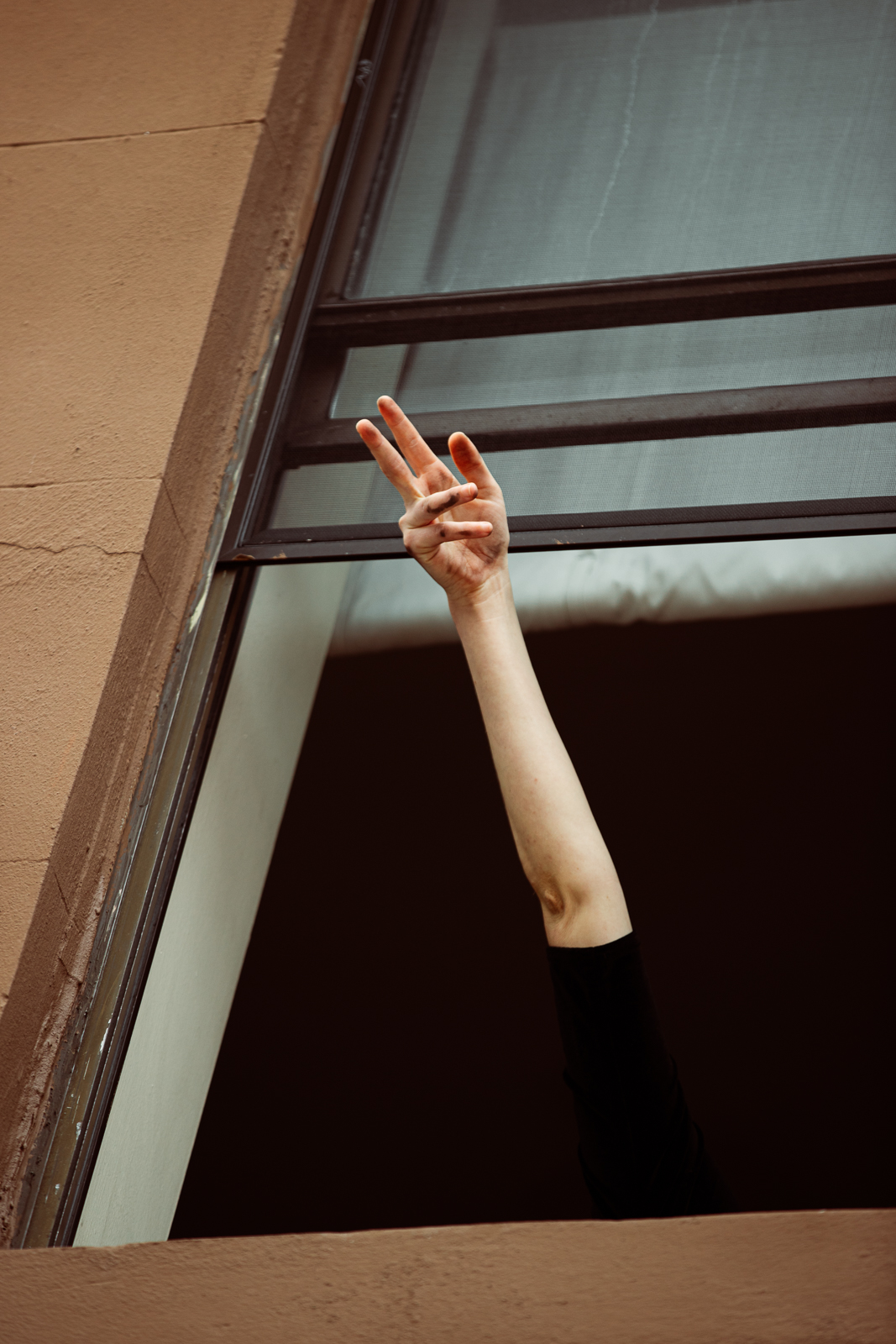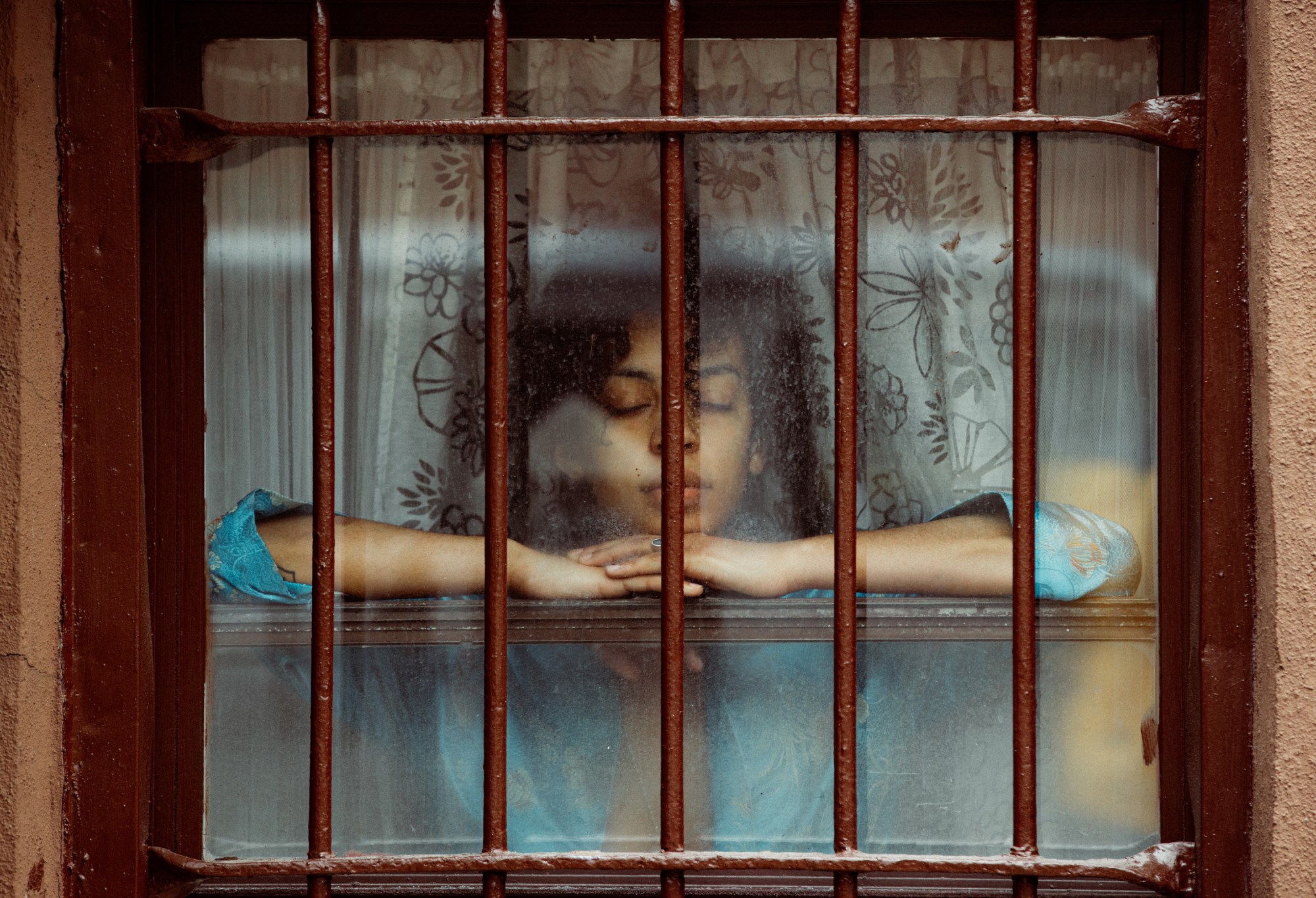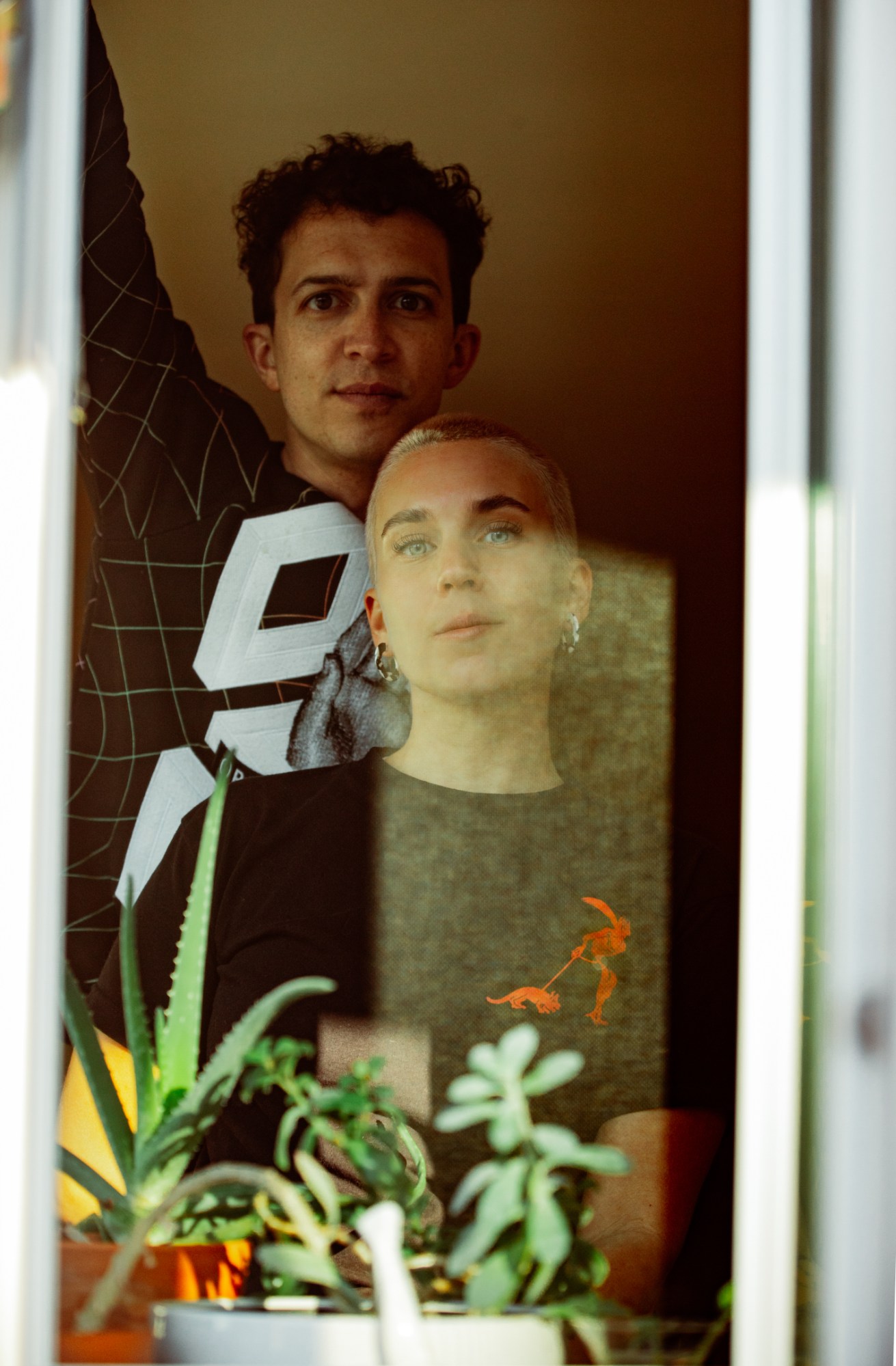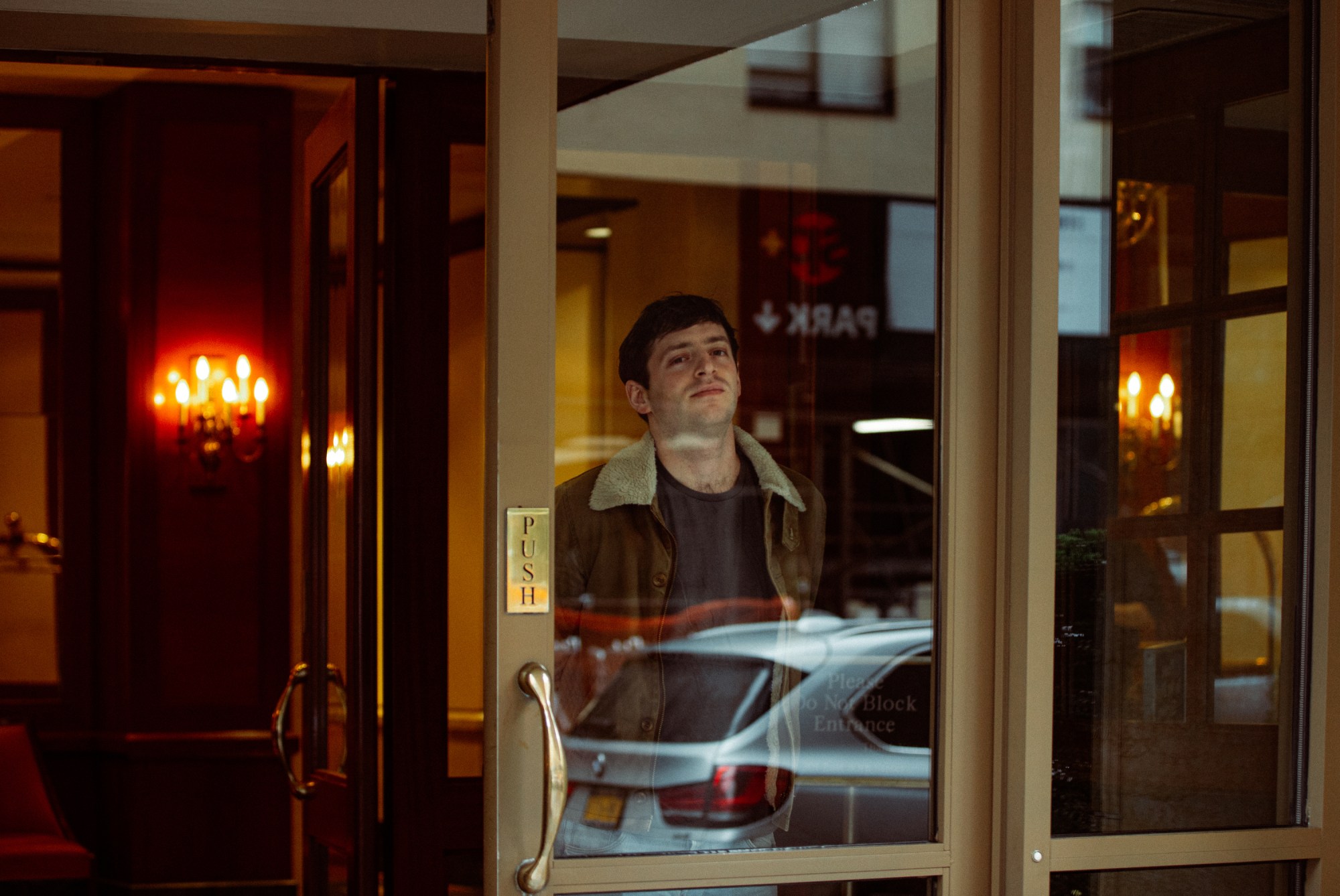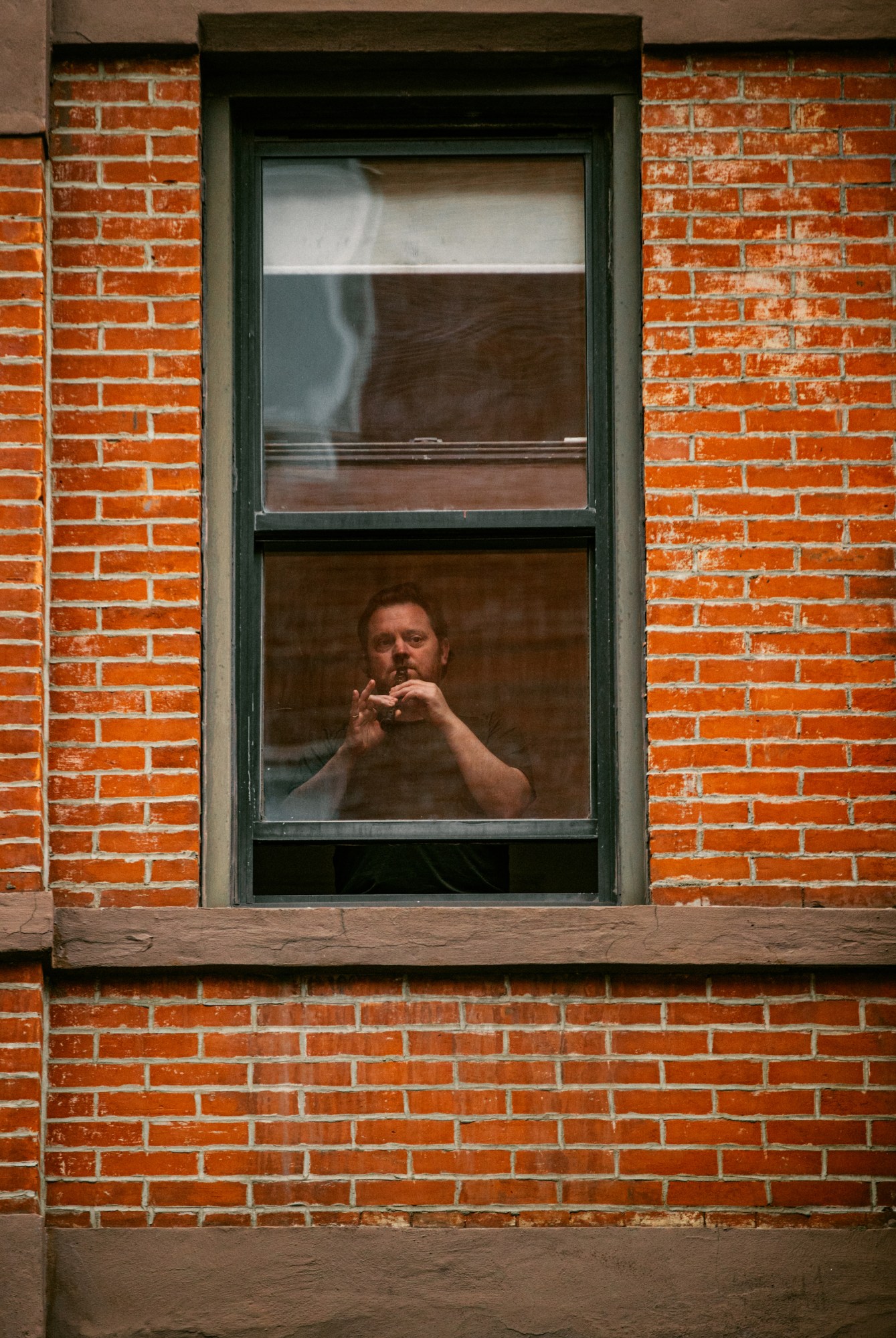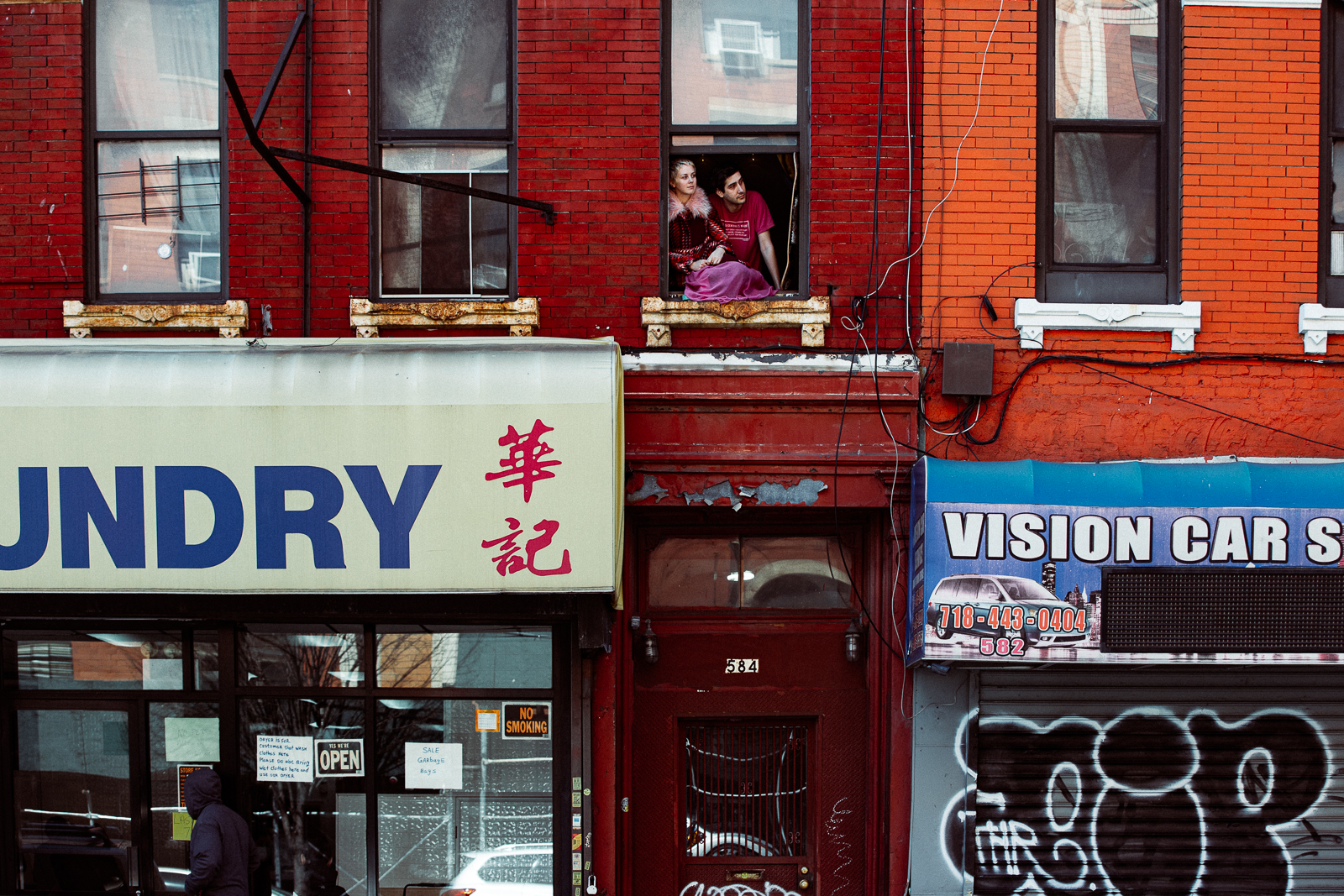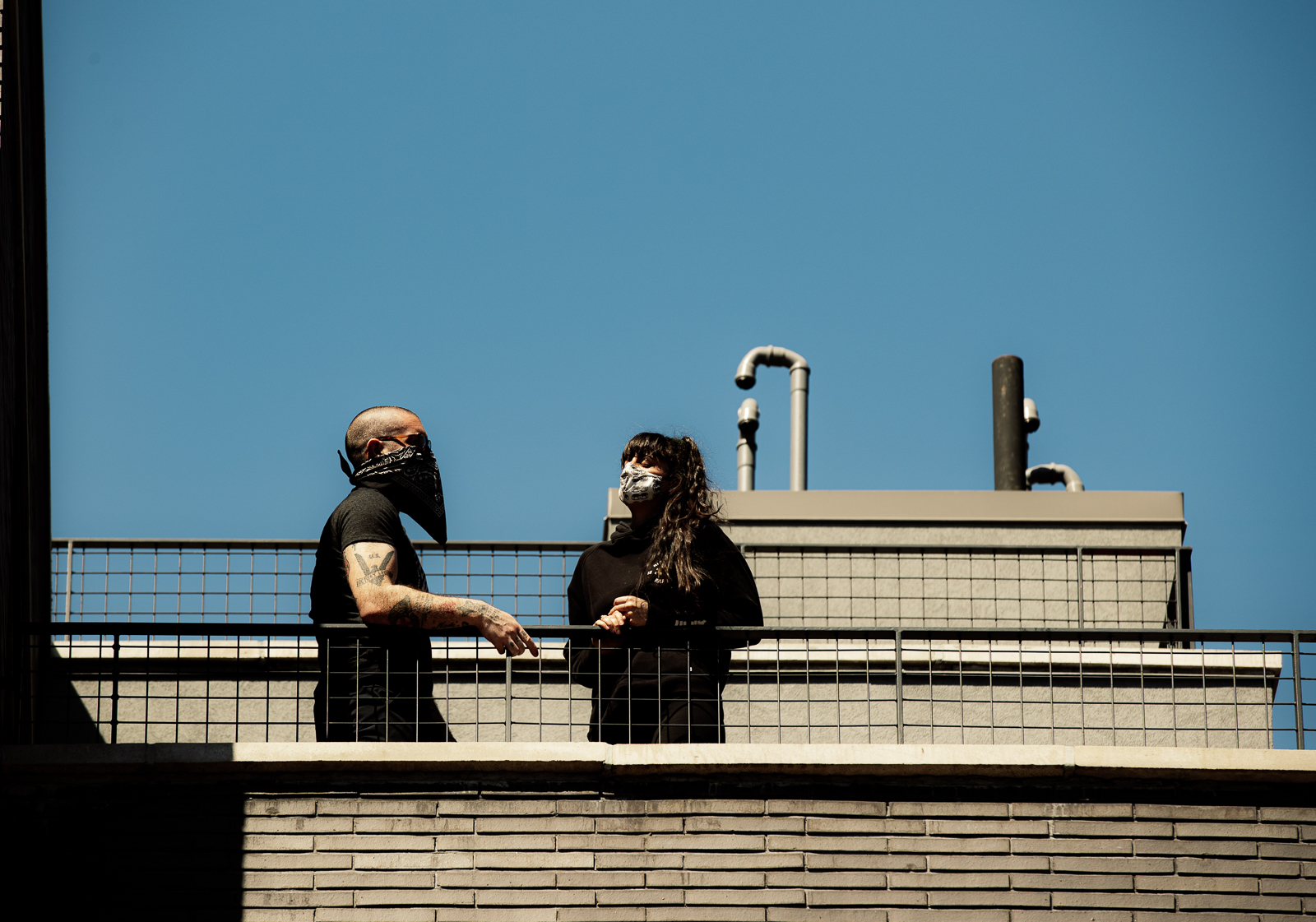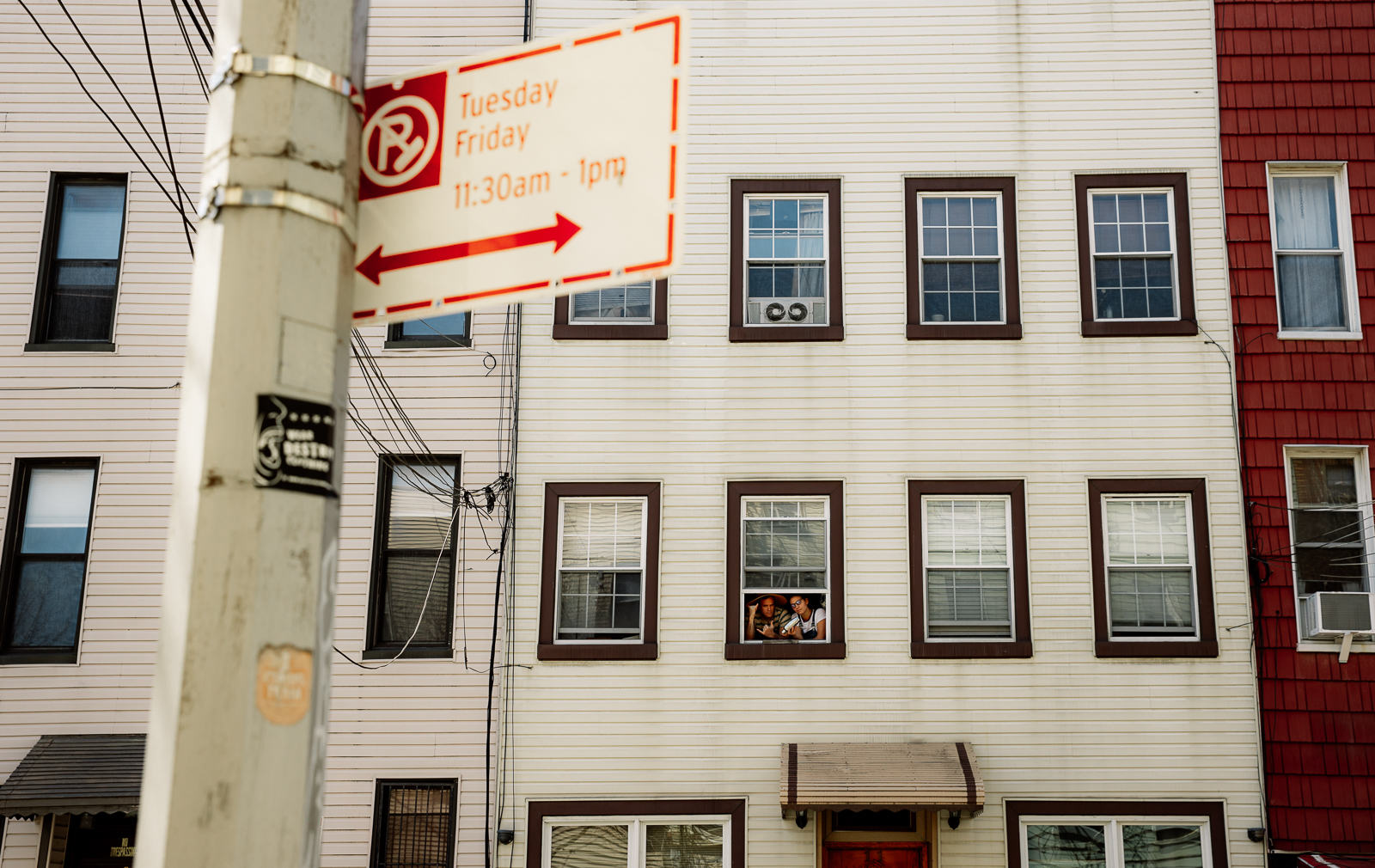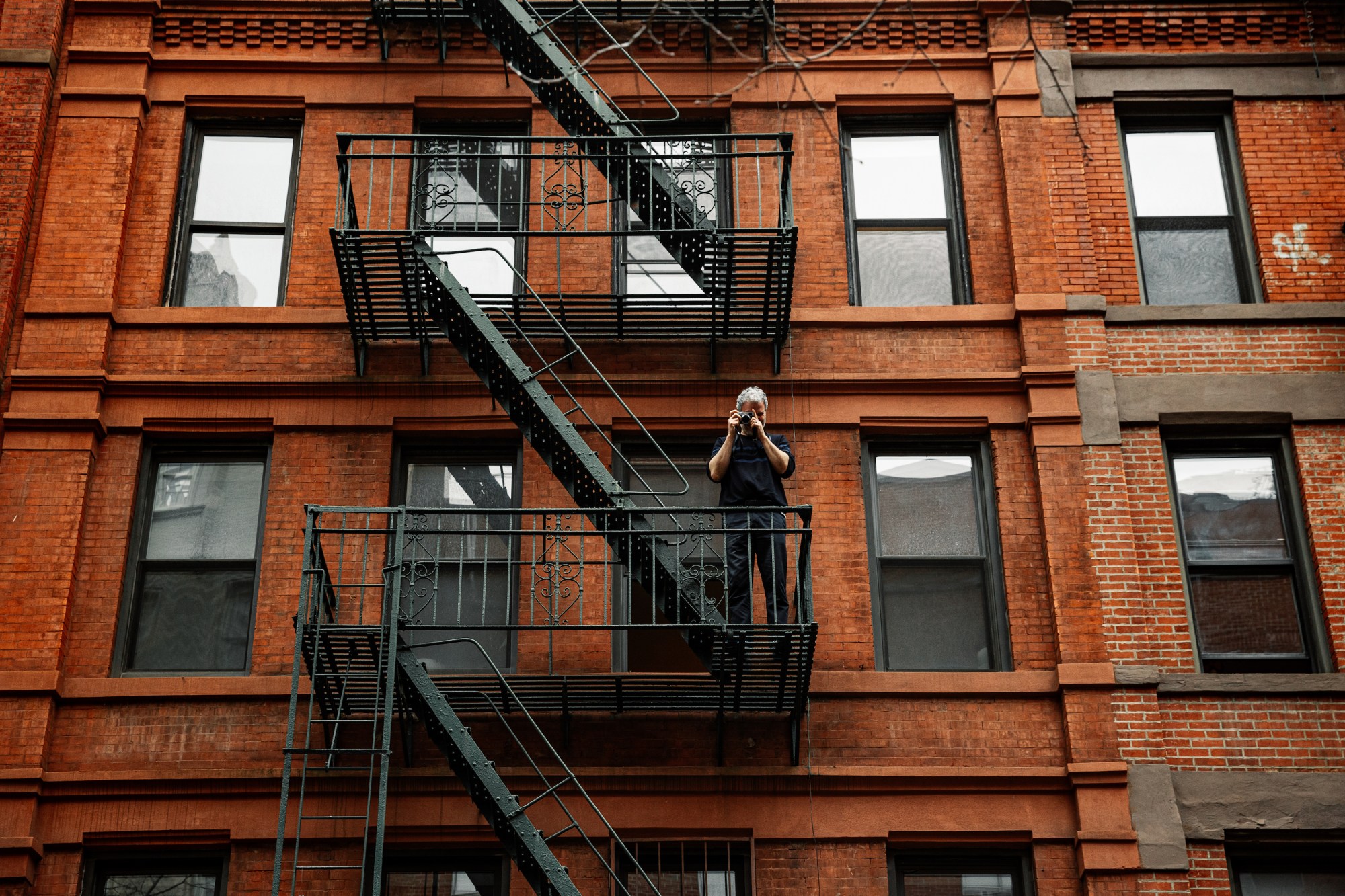On a typical night in New York City, you can find Aysia Marotta in the pit at one of the most buzzed about gigs, poised to capture the show through the lens of her camera. If she happens to be out of town, she’s likely doing this exact thing elsewhere — perhaps on tour with The Japanese House or Lewis Capaldi. Due to the onset of COVID-19, however, there are no such gigs to photograph, and there might not be for a while, which has left many music photographers (and the industry at large) hard-pressed for work. In an effort to document our current reality, and in part inspired by her dog George’s favorite sun-soaked window seat, Aysia set out to photograph fellow New Yorkers in quarantine by snapping portraits of them in their own windows. Safely, in a hazmat suit, of course.
Since the launch of the “Come To My Window” project, Aysia, who studied documentary film production at Brooklyn College, has focused on photographing creatives who’ve lost their jobs in the midst of coronavirus, and those who’ve been self-isolating alone, to offer up some much-needed human interaction — even if it’s from afar. “I want the project to really show all walks of life and how they’re handling this, but mostly show how serious it is for someone to be alone for the unforeseeable future,” Aysia says, “how communicating through FaceTime, digital softwares and all of this — it’s a bandaid, but it’s not one that’s going to stay on.”
In recent weeks, Aysia has expanded the project to south Florida, where she grew up, and to a number of cities around the world by collaborating with other photographers. Alongside the intimate portraits, she tells us what life was like in New York before her departure, how the pressure to be creative during quarantine has affected her work and what she hopes to see on the other side of all of this.
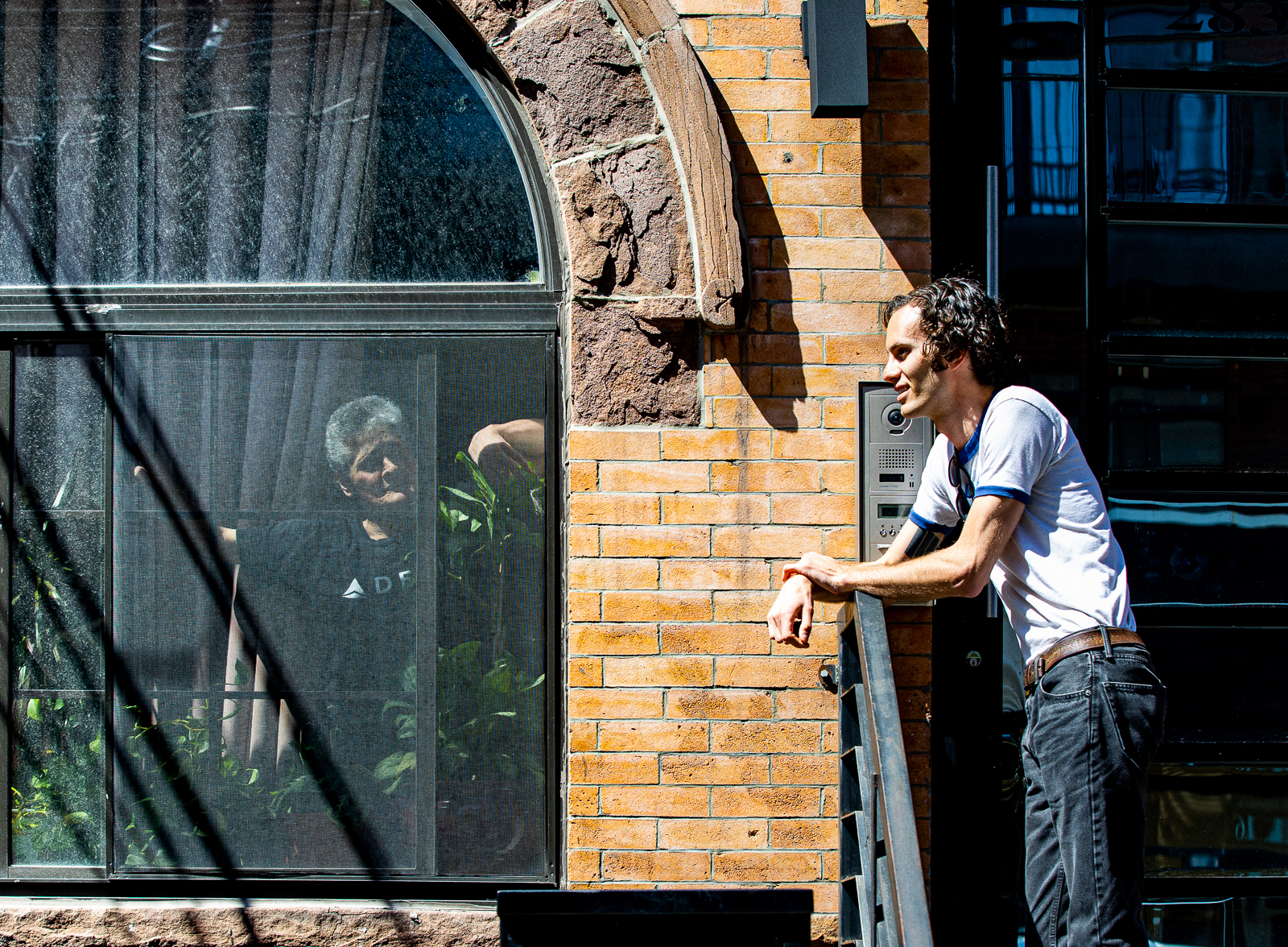
When did the idea for the series first come to you?
I had actually come home early from a tour that I was on because we were all involved in a very bad bus accident, and it postponed our tour. I’d been hearing about the virus and it just seemed like the best thing for me, personally, was to be back in the States. When I came home [from Europe] I was freaking out. I didn’t really know what I was going to do as far as work, and how to be creative in the space that we were being limited to. I was laying there one night thinking about a good way to capture this kind of history without endangering myself and endangering others.
It all really stemmed from the fact that my dog sits in the window of our apartment all day long. Anytime we leave and come back, he’s just sitting there and I always take photos of him in the window, and I was thinking to myself this might be good to expand on if I could get other people to sit in their windows or catch people who are doing it on the off chance. It’s been wild to see how many people actually just sit, people watch and observe this stillness of life outside of their apartments now.
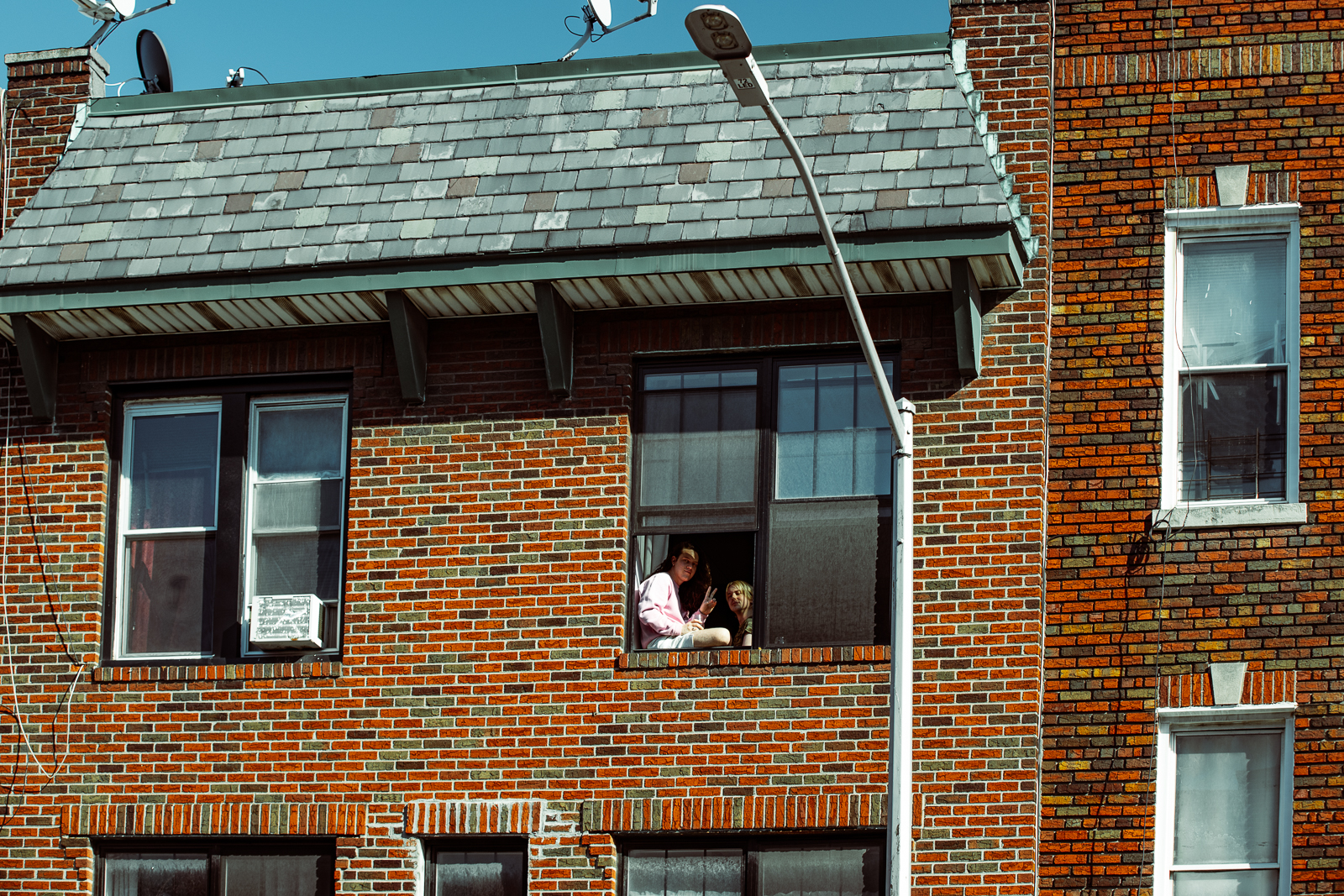
When you’re approaching these portraits, what does each entail from start to finish?
I put the word out about the project on my social media. Basically, I let people know a time frame that I’m coming to the front of their apartment and I show up, in like, full hazmat suit — gloves, face mask, protective eyewear, anything that I could just be covered up in, with a step stool and camera with a telephoto lens. A lot of people just linger around the windows in their apartment and then they’ll come forward once I let them know that I’m there and they’ll just sit in their window, read books or listen to music. I’ve been trying to find people who have lost their jobs and have a very particular occupation, for instance dancers, chefs or photographers like myself. It’s purely taken from an observational standpoint to just document the stillness that we’re internalizing now in our homes, and also witnessing it on the outskirts of our homes and in front of our homes. I typically get around three or four shots. I don’t really overshoot it because I don’t want them to become super aware that I’m there. So, I’ll get a very tight shot of them in the frame of their window, then I’ll expand and show a wide shot of the street, which is typically very empty; except for maybe one or two shots that I’ve gotten over the series where there are five or six people standing very closely together with no protective masks or gloves.
Are you shooting a few of these in a day, or do you set off and do one at a time?
To make sure that I’m being the safest I schedule myself a week and I will typically only do three subjects a day, maximum five if they’re all within the same area. I try to prioritize those shoots around days where I’m having to go get groceries. I don’t really want to go out if I don’t have to, but I do have to with this, even though it’s deemed unessential.
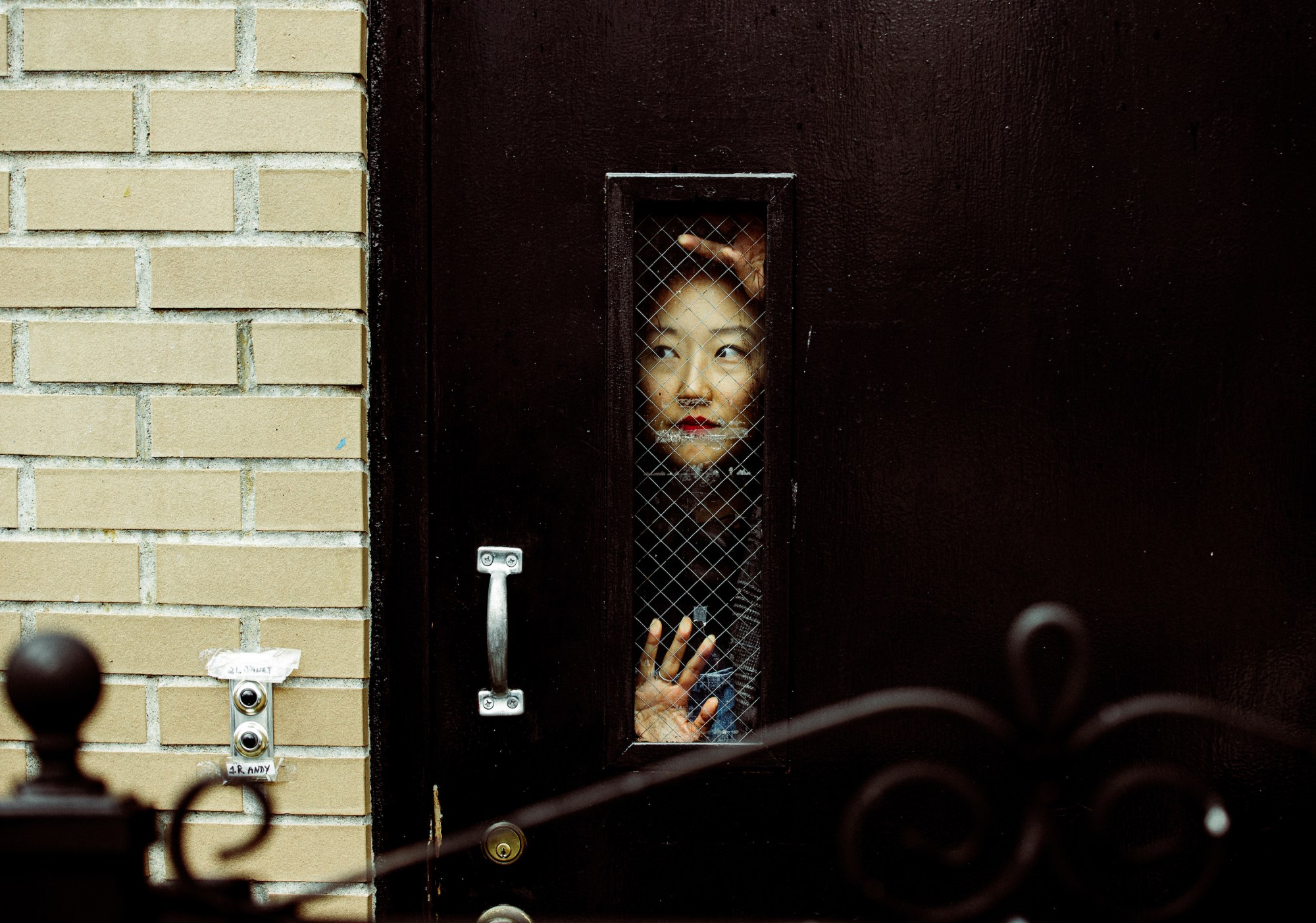
Of course, but you’re taking precautions too.
Doing this has gained a little bit of controversy, not widely or publicly, but it’s definitely been said to me and others about how I’m a non-essential worker. I’m endangering myself and others by doing this. It’s very strange territory that we’re all working in at the moment. But I’m only shooting with a telephoto lens, so that kind of ensures that I’m able to get tight shots and the wide shots that I need, but ultimately I’m six plus feet away from any subject that I shoot. It’s usually around 12 feet.
Have there been any particular experiences that really struck throughout the course of this project?
I think it was my last shoot in Manhattan, I had an appointment to photograph the director of photography for Lady Bird, Sam Levy, and I was waiting for him on his street and all of a sudden there was music coming from somewhere. It’s was so jarring, I don’t know if you’ve been in the city since all of this has been happening, but you hear pins drop. That’s how quiet it is. It’s nothing you’ve ever experienced in your life. So, I’m standing on his street, waiting for him to come out onto his fire escape to take his portrait, and I hear music. It was someone playing an instrument and I was looking up and scanning the buildings, and there was this guy just standing in his window playing the recorder — just looking out the window, playing a recorder. That was really the first moment in the project where it’s been purely observational; where I didn’t have to prompt anyone to just be there. And he just stood there and played for another 45 minutes. He didn’t think he had an audience because there’s no one on the streets. It was a nice little moment.

Aside from the fact that these photos document this crazy time and how we’re self-isolating, what are you hoping to bring to light with some of these images?
A lot of this is based around the community that’s being created by literally every citizen in this country having to abide by the same rules. It’s all humbled us in a way, and we’re all handling it in a very different way. It started just documenting people’s everyday now, but as it progressed and through the weeks, I was noticing that I was getting a lot of people who had partners to quarantine with — whether it be a roommate or girlfriend or boyfriend. But I think that a big backlash of all of this is loneliness. Some people are having to go at it alone, and it targets all races, ages, sexes. It’s a troubling thing that nobody’s really touching on. So, a big part of the project turned into, more or less, not just me documenting people that are isolating on their own, but more so being a friendly face to those who are isolating alone. At least [there’s] some kind of human interaction for the day, even if we weren’t very close together. I want the project to really show all walks of life and how they’re handling this, but mostly show how serious it is for someone to be alone for the unforeseeable future, how communicating through FaceTime, digital softwares and all of this — it’s a bandaid, but it’s not one that’s going to stay on.
Loneliness is already an epidemic in this country, and it’s especially affecting young people.
There are people that feel lonely being in another room with someone that they’ve known their whole lives, but that loneliness… It’s way different when you’re told you can’t leave your house. You can’t see your friends, you can’t see your family, you can’t leave the state you’re in. We’re living under all these restrictions and those that are prone to depression or prone to mental illness and are facing this alone, no one’s really looking for a way to fix that while it’s happening. It’s so easy to say to someone, “If you’re having a hard time, feel free to give me a call.” Sometimes a call doesn’t help, sometimes you just need to see someone. I feel like the project brings people out of their shell in their home. It changes things a little bit. After the accident, I fell into a massive depression. I didn’t leave my room. It’s still something that I’m dealing with, but the project has helped me come back to myself a little bit in the sense of, if I’m helping someone feel better then maybe I’ll feel better too.

Now you’re shooting for the series in Florida, do you have any plans to collaborate with photographers in other locations?
Yeah, absolutely. From the day I started this project, I never saw this as something that would just be me. There’s so much world to cover and now with all these restrictions, I can’t really do that. I already have a few collaborators that I’m in touch with in London and all over the US, and I’m going to start compiling their work to eventually release a book where proceeds will benefit one big organization more widely, whether it be One Fair Wage or an organization like that.
The best thing about this, and it’s a little silver lining, is that even though eventually one day, hopefully soon, all these bans and restrictions will be lifted. But I don’t think this is something that’s going to go away. I think people are going to quarantine regularly. I think the fear is always going to kind of live in us. I’m hoping to do most of the hot zones. So, like New York, LA, I have someone in SF that’s currently going to start shooting.
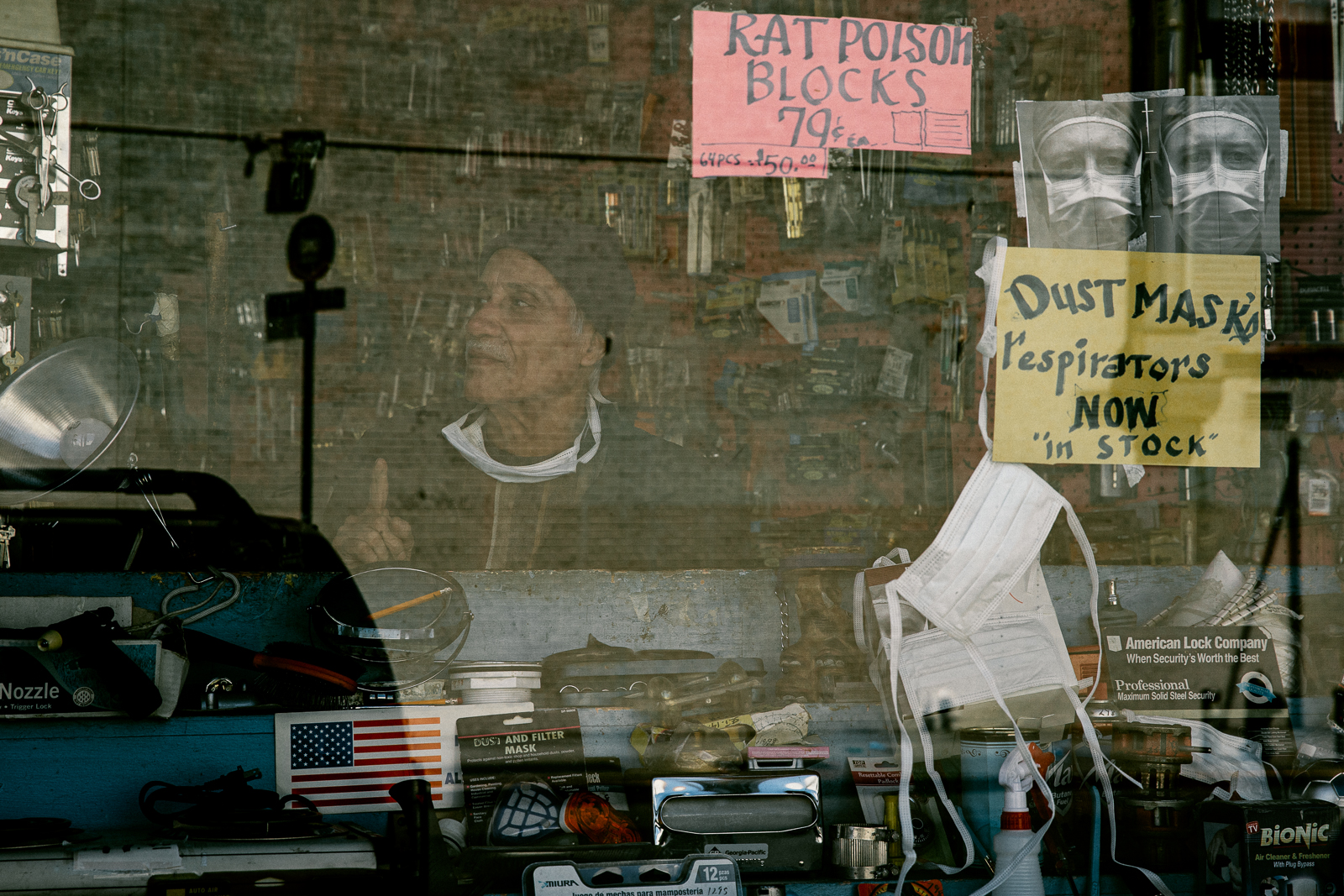
Music photography is a huge part of everything that you do. What are some of the most meaningful experiences that you’ve had along the way?
Every tour I’ve been on has given me the ability to explore places that I’ve always wanted to go. It’s opened up my eyes to how big the world is, which is incredible. To be able to do international touring and to see how fans are different in different parts of the world is just the most incredible experience. That’s my favorite part of it, is just the fan interaction at the shows. But touring probably won’t be happening for a very long time. It’s a terrifying time to be a music photographer right now. We’ll figure it out, but I am so thankful that I got some of the best experiences of my life on these tours in the last couple of years, to have seen the world at this stage in my life, right before a global shutdown is the most humbling. I can’t explain it. I can’t put it into words. This whole situation puts everything into perspective for me.
I’m sure this time period will lead to future projects and maybe very, very different projects as we’re all forced to get creative.
I definitely have days where I’m struggling terribly and I feel depressed, and I’m scared, and I’m anxious, but then I try to just remind myself that I’m given this period of time, which we don’t know how long it’s going to be. So, why not emerge from this better than I was when I came into it. I’ve just been spending every single moment I have learning something new to apply to my career. It’s a weird time, but I think we all needed to calm down a little bit, globally.
If there’s anything positive that can come from this, hopefully it would be that.
Yeah, that and Donald Trump not existing anymore.
